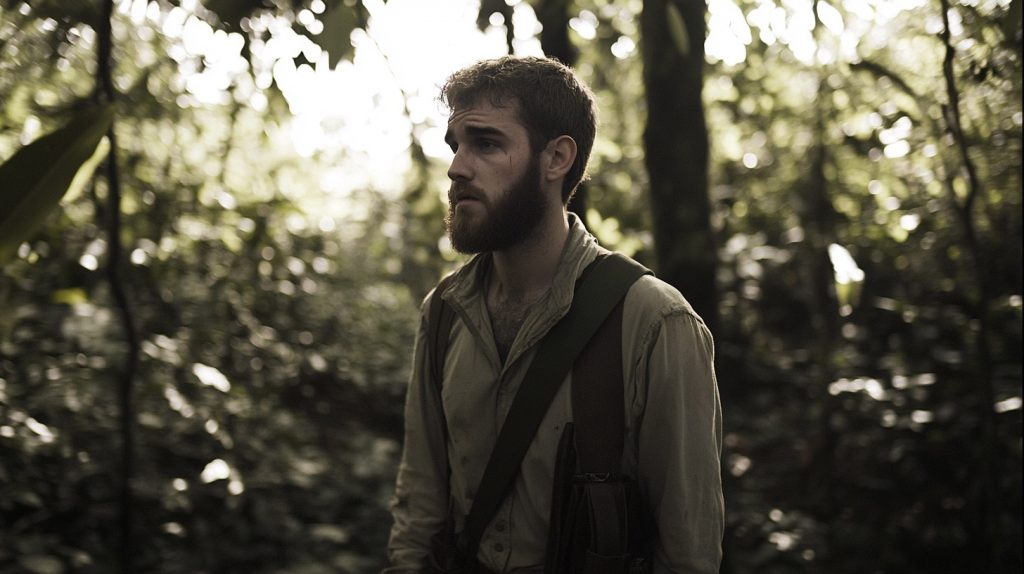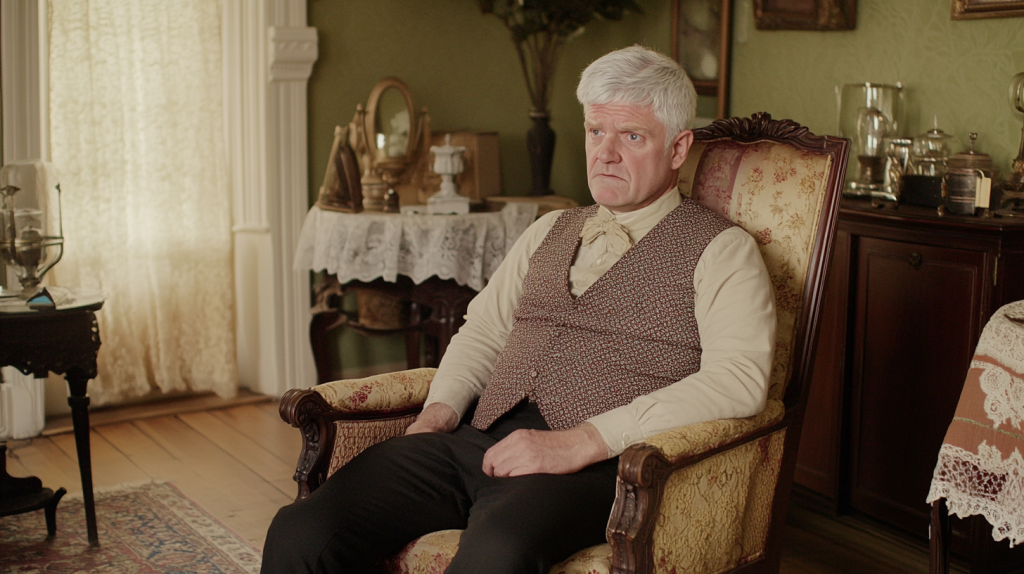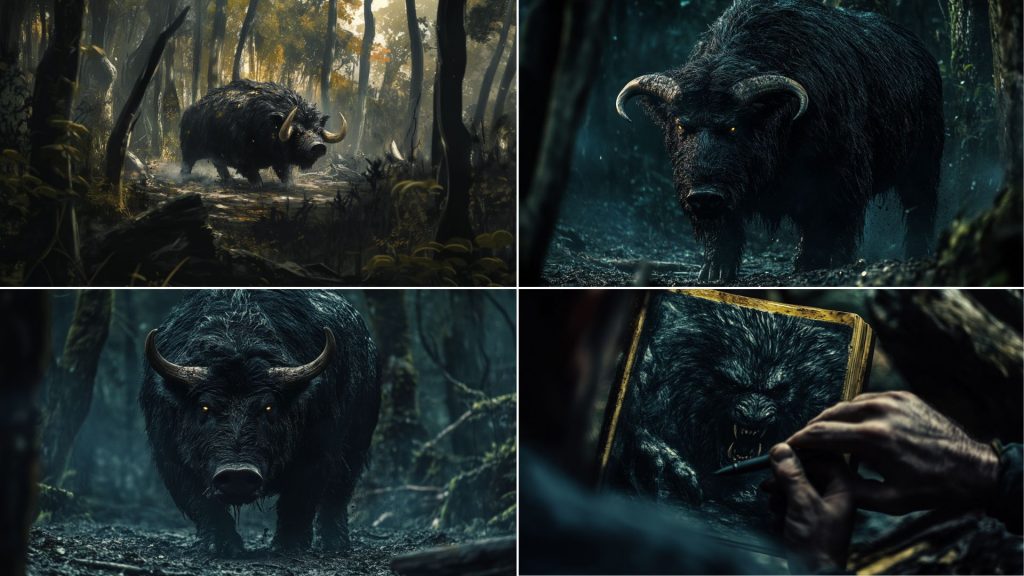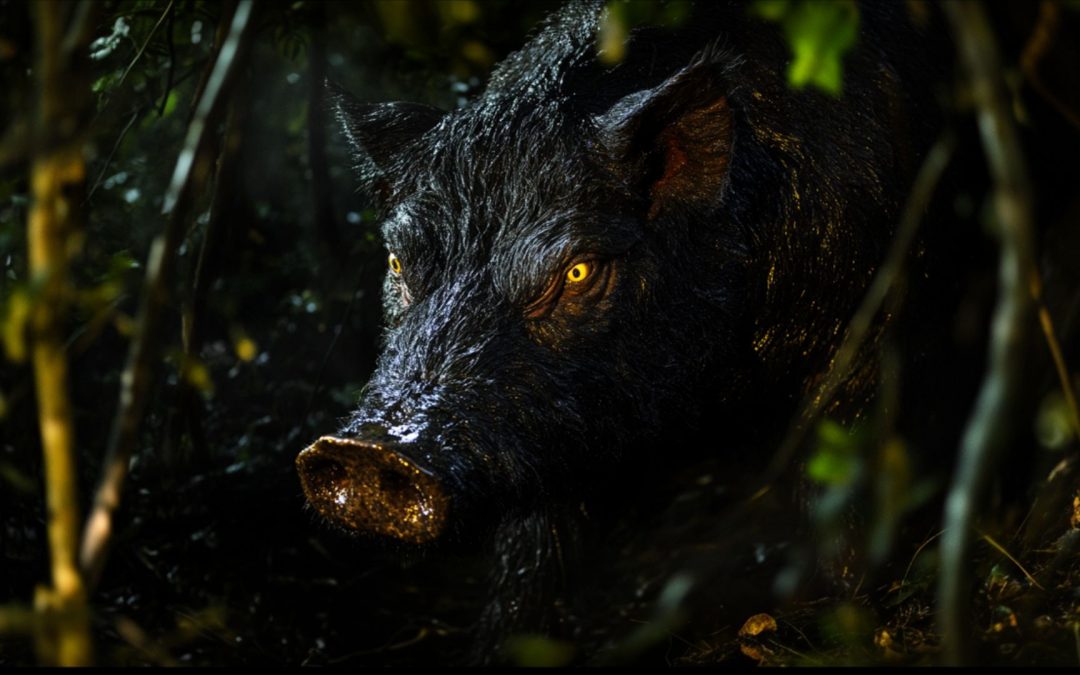A retired colonel knows his brother is dead – but the truth defies logic. His only clue? A mythical pig and a theory too wild to believe.
Colonel Jonathan Statham cuts an impressive figure. Retired from the army for a decade now he still maintains that life-long military bearing – the straight back, the raised chin, the air of superiority that comes with packing a fully-loaded revolver.
He greets you at his Shimmerings home with a firm shake of the hand, a tumbler of whatever your tipple might be (I pass, being on duty) and a quick tour of his study which is busy with illustrations and portraits.
There he is receiving an honour from the Lord Lieutenant. There he is greeting some Dominion dignitary alongside the Prime Minister of the day. There he is dancing in some wild attire in some diplomatic outreach programme. There he is with his brother…
The momentary pause.
His brother, dead at 23
His brother, Richard. Two years younger and he never managed to achieve the age of Jonathan, 63, nor his grey hair.
Dead at 23, four decades ago.
Mauled to death by a savage beast thousands of miles away.

Or so the story goes.
Colonel Statham has another theory and it is to this other theory that we turn. Because it’s quite something.
Colonel Jonathan Statham – pragmatic, down-to-earth, unflappable and not given to outlandish notions from hippyish types – has written a book, The Mystery of the Yellow-Eyed Pig, which announces his theory. Or at least shares his befuddlement.
It is a curious tale told in the stilting manner written by an army engineer used to compiling factual and dry weather reports but now suddenly compelled to write about myths, legend and nebulous contortions of nature.
Are you mad, sir?
Is he embarrassed? He seems not. Every time I gently probe on matters that surround the question – are you mad, sir? – he darts an eye up to that picture of the two grinning brothers, one 13, one 11, as if he needs to remind himself of his obligations to that young boy.
He has a duty to preserve the memory and lay to rest the fidgety young seeker and adventurer and, if nothing else, Colonel Jonathan Statham is a man of duty.
To recap. While his older brother was an engineer in the Army, taking rides on Company ships to far-off Dominions perhaps to build a bridge or install a tribal leader, the younger boy Richard spent his days in the fields.
He was something of a dreamer, something of a misfit, says Jonathan. He had drifted from job to job, and spent one summer – “his happiest” – as a pig herder.
“Wrong, somehow,” is his brother’s two-word summary of his brother’s character and outlook.
The day his brother left
One day, with nothing to do, Richard caught a ride on a sloop venturing east and fell in love with some of the islands he found there – the unusual flora and fauna, the sense of the exotic. Perhaps as a reaction to a strict upbringing – although Jonathan calls it “normal” – Richard found himself poetically entranced with tales of strange creatures, curious rituals, legends and myths.
Jonathan says, “We grew up on military stories. Our father was in the service too, so all our bedtime stories involved heroes, men who would single-handedly achieve some justice at the end of a sword.

“They weren’t for the faint-hearted but they gave us both a clear idea of what a man was supposed to do. Action and purpose. I followed this to the letter, Richard went the way. He rebelled in his own way, becoming entranced by the irresolute magic of nature.”
On his return from this three-year sojourn aboard the Raggedy Doll, Richard attempted to settle. He couldn’t. He quit his lodgings and went to live in a forest becoming close to feral in his manner and appetites.
Hunt for the yellow-eyed pig
His brother, hoping to rescue Richard, gave him money in the hope to restore him to society. Immediately, Richard chartered a ship and a crew to take him east.
He had heard of the Legend of the Yellow-Eyed Pig. It was said to inhabit the small, forest island of Gauchet in the Asian waters.
His intent? To see the pig, sketch the pig, study the pig and… catch the pig. There was no particular merit to catching the pig – he was not planning on removing it from the island – but there was a legend that the scratch stiff hairs of the yellow-eyed pig, if somehow ingested, held the secret to living in harmony with nature, as Richard had always tried to do.

He spent his money on two major outlays. The first was a ship and its crew, the Belvedere, a brigantine of about 100 feet in length. The two-masted sailing vessel features a square-rigged foremast and a fore-and-aft rigged mainmast, giving it excellent sailing versatility. Among the crew, renowned tracker Evelyn Couplet.
The second item became known as the Yepi, the yellow-eyed pig stall. Engineered and built by Jonathan himself as a gift. The Yepi was designed to lure, hold and analyse the yellow-eyed pig, a creature notorious for being not lurable or holdable.
Let’s skip ahead to the famous telegram of 1835 OT. Sent to Jonathan himself, it read simply:
An urgent telegram
SIGHTED BEAST IN DENSE UNDERGROWTH – STOP
SIZE EXCEEDS ANY SWINE KNOWN – STOP
BRISTLING BLACK HIDE, MUD-SLICKED – STOP
LOW, HEAVY HEAD; TUSKS LIKE CURVED KNIVES – STOP
YELLOW EYES FLASHED IN TORCHLIGHT – STOP
SNUFFLING LIKE A BELLOWS, THEN VANISHED – STOP
TRACKS SIZE OF A MAN’S HAND – STOP
MAY NOT HAVE BEEN ALONE – STOP
MORE REPORTS TO FOLLOW IF I SURVIVE – STOP
Then nothing. For six months. Until the Belvedere appeared one day at the Blue Docks in Guardian City, its crew ragged and full of conflicting tales of what occurred next. Jonathan received word of the arrival and dashed to the Obscurity to get first-hand tales.
Where’s Richard? Where’s Richard?
He says, “I couldn’t make any sense of what they were saying. I kept asking, where’s Richard, where’s Richard, but they were in a state of confusion. They didn’t know a Richard.
“I went to his cabin and found sketches of what I assumed was the yellow-eyed pig, all different shapes and sizes though. Nothing consistent. I pointed to the pictures and the crew recoiled in horror, emitting such strange sounds. Each had seen a different version of the pig. They were terrified for their lives.”

From what Jonathan could piece together, his crew had abandoned him on the island, too scared to spend a second night in their makeshift camp because they awoke on their first to find one of their tents destroyed and two of their shipmates “savaged to gore”. Only three feet away, yet no-one heard a sound.
Richard refused to return to the vessel and he told the captain, a swarthy lowlife called Pernickle, that he would sleep inside the Yepi, sealing the door closed to escape attack.
Two sets of hoofprints
Overnight the crew agreed to sail back to Guardian City as soon as the tide turned and, at first light, a party ventured back to the forest to check on the Yepi and invite Richard to join them.
They found the Yepi. The porthole door was open, no sign of Richard, no sign of the remains of Richard. No sign of struggle. Tracker Evelyn Couplet noted that there was a set of large cloven hoofprints leading up to the Yepi – and two sets leaving.
Jonathan says, “I asked him then as I have done a hundred times – are you sure? Are you sure? One set arriving, two sets leaving? What does that mean? But the man was out of his mind, a timorous wreck. He knows the only conclusion and yet his mind could not tolerate the thinking of it.”
I ask Jonathan, “What conclusion?”
Jonathan seemingly grips the arms of the comfortable chair upon which he sits. He grits his teeth because he has to say what he has to say.
A pig is somehow involved
“Richard was somehow – don’t ask me how – transmuted into becoming a yellow-eyed pig…?” He adds the question mark, as he must. He raises a hand as if to stop my interruptions. Let me continue, is his body language. “There is a legend that the yellow-eyed pig is a shape-shifter, enchanting men and inviting them to…”
- Commodore and his bizarre beach blunder spark diplomatic crisis
- The obsession that consumed Merrick Hobb
Again, he doesn’t finish the thought. He knows how he sounds, how ridiculous. He is engineer. He builts things. Solid things with foundations. All this is… nonsense. He tells me, as an aside, that he has lost most of his friends who can’t tolerate how he worries endlessly on the problem.
They say he is suffering guilt and grief because Richard never settled into life the way Jonathan had. Richard was never comfortable in his, er, skin.
He stops again.
I glance up at the photo, which seems to so carefree at first glance. Now I begin to see the differences. Jonathan confident and strong, Richard, unsure of himself.
The sickening traces left behind
Jonathan says, “What bothers me most is the reports from other sailors. How they went about the site one last time and they found, in a culvert or stream, a shedded skin.”
“What do you mean?” I ask.
Jonathan raises his arms in exasperation. “I don’t know. I just get ‘shedded skin’. I asked, like a snake? And they said, “No, like a human, like… Richard.”
At this point Jonathan closes down the interview. He finds this very difficult to talk about. Read the book, he says sharply as if my interview is an impertinence and intrusion.
I must go to pig island
But his book – a slim volume – has more questions than answers, which is frustrating to a man who has spent his career delivering practical solutions. It annoys him, the unfinished nature of the story. The proceeds from sales, he adds, will go towards mounting an expedition back to the island that he himself will lead.
He wants to find the truth and he has to find the truth.
Find the pig. Look it in the yellow eye and say…
I complete his sentence. “And say, ‘Richard, is that you?’”
Sounds crazy, doesn’t it?
“Tell me another explanation,” asks Jonathan, almost as a plea. Anything to end his torment.

